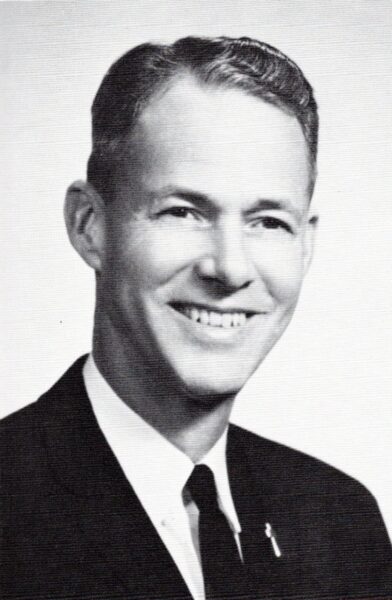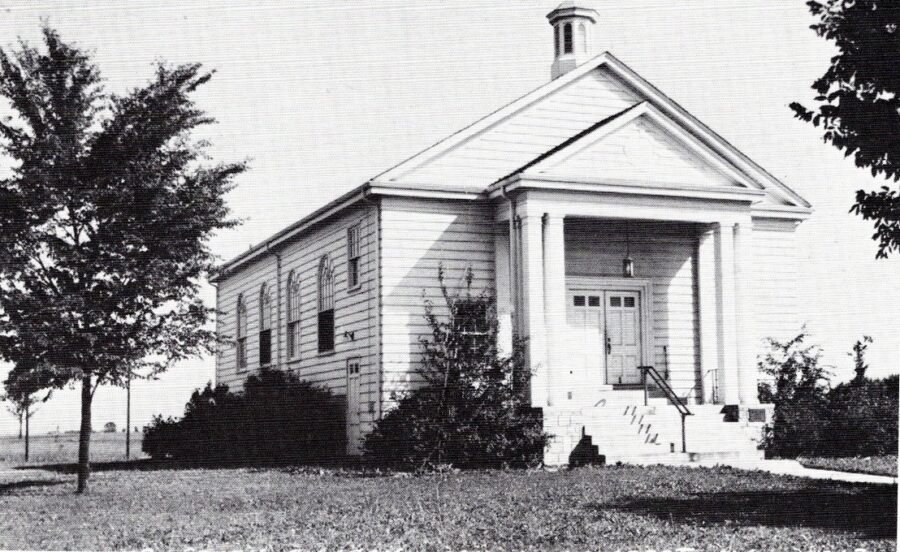
Pastor Edwin I. Stevens was the inaugural pastor for The South Church.
Stevens “answered the call” when a group of 13 Mount Prospect residents wanted to start an English-speaking Protestant community church that would serve every denomination. At the time, only St. Paul Lutheran Church existed in the Village and German was the predominant language there.
Leonard and Corinne Johnson and Dr. Judsom Lee and his wife began the effort to start a second church in late 1935 and for the next 14 months, group meetings were held in the VFW Hall at the time. But the first formal church service was held at the Northwest Hills Country Club on February 7, 1937. In September of that year ground was broken for the church.
Meanwhile, the Lees and Johnsons were “shopping” for a minister and discovered that Mount Prospect had been “given to” the Baptists and that no other denomination could establish a church here until after the Baptists were established. Apparently, back then the “unchurched” areas around Chicago were divided town by town between the seven dominant Chicago denominations. At the time, there were no Baptist churches between Park Ridge and Barrington.
“I suggested that we call it The South Church because it was south of the tracks . . . and then we tacked on the Community Baptist part out of concession to the money that the Baptists were giving us,” Leonard Johnson said in a 1987 interview with the Herald for the church’s 50th anniversary.
The picturesque little white church was completed in just three months and the first service was held there on December 19, 1937. The charter membership represented many different denominations.
Edwin Stevens, a Vermont native and recent seminary graduate whom members called “Pastor Steve,” became the new church’s first minister. He recalled walking from house to house, recruiting members. His wife, Marion, assisted him. The couple had two young children – Lucia and Ralph.
In late 1942, with the United States propelled into war following the Japanese bombing of Pearl Harbor, Reverend Stevens felt he would be better serving God and his country by enlisting in the Army as a chaplain. During his absence and until his safe return in early 1946, his position was temporarily filled by two other pastors.
For many years the ground floor meeting room beneath the sanctuary was busy with church Sunday school, drama and Bible Study groups. Scouts, as well as women’s and men’s clubs representing all segments of the community, also met there.
And throughout the 1940s and 1950s, South Church experienced an ever-expanding congregation and numerous building additions. For instance, in 1957, a Christian Education addition was built and dedicated a year later to accommodate all church children from ages 3 to 12.
The Stevens continued to minister to the congregation until Marion’s death in 1962 and Pastor Steve’s retirement in 1974. He was replaced by Reverend John Clements.






